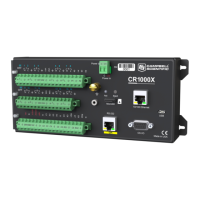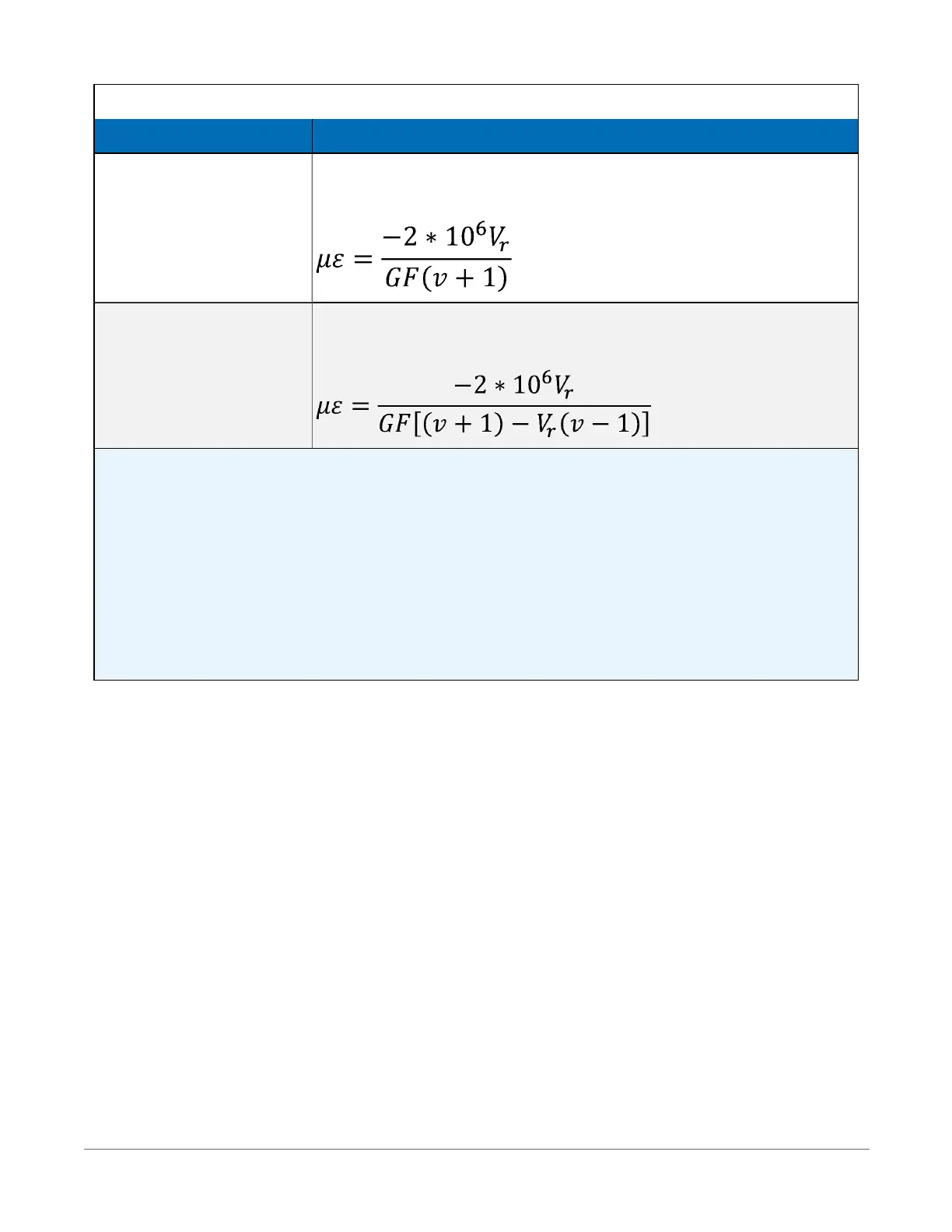Table 6-3: StrainCalc() configuration codes
BrConfig Code Configuration
5
Full-bridge strain gauge. Half the bridge has two gauges parallel to
+ɛ and -ɛ, and the other half to +νɛ and -νɛ 1:
6
Full-bridge strain gauge. Half the bridge has two gauges parallel to
+ɛ and -νɛ , and the other half to -νɛ and +ɛ
1
:
1
Where
• ν : Poisson's Ratio (0 if not applicable).
• GF: Gauge Factor.
• V
r
: 0.001 (Source-Zero) if BRConfig code is positive (+).
• V
r
: –0.001 (Source-Zero) if BRConfig code is negative (–).
and where:
• "source": the result of the full-bridge measurement (X = 1000 • V1 / Vx) when multiplier = 1 and offset = 0.
• "zero": gauge offset to establish an arbitrary zero.
6.3.3 AC excitation
Some resistive sensors require ac excitation. Ac excitation is defined as excitation with equal
positive (+) and negative (–) duration and magnitude. These include electrolytic tilt sensors, soil
moisture blocks, water-conductivity sensors, and wetness-sensing grids. The use of single polarity
dc excitation with these sensors can result in polarization of sensor materials and the substance
measured. Polarization may cause erroneous measurement, calibration changes, or rapid sensor
decay.
Other sensors, for example, LVDTs (linear variable differential transformers), require ac excitation
because they require inductive coupling to provide a signal. Dc excitation in an LVDT will result
in no measurement.
CRBasic bridge-measurement instructions have the option to reverse polarity to provide ac
excitation by setting the RevEx parameter to True.
6. Measurements 68

